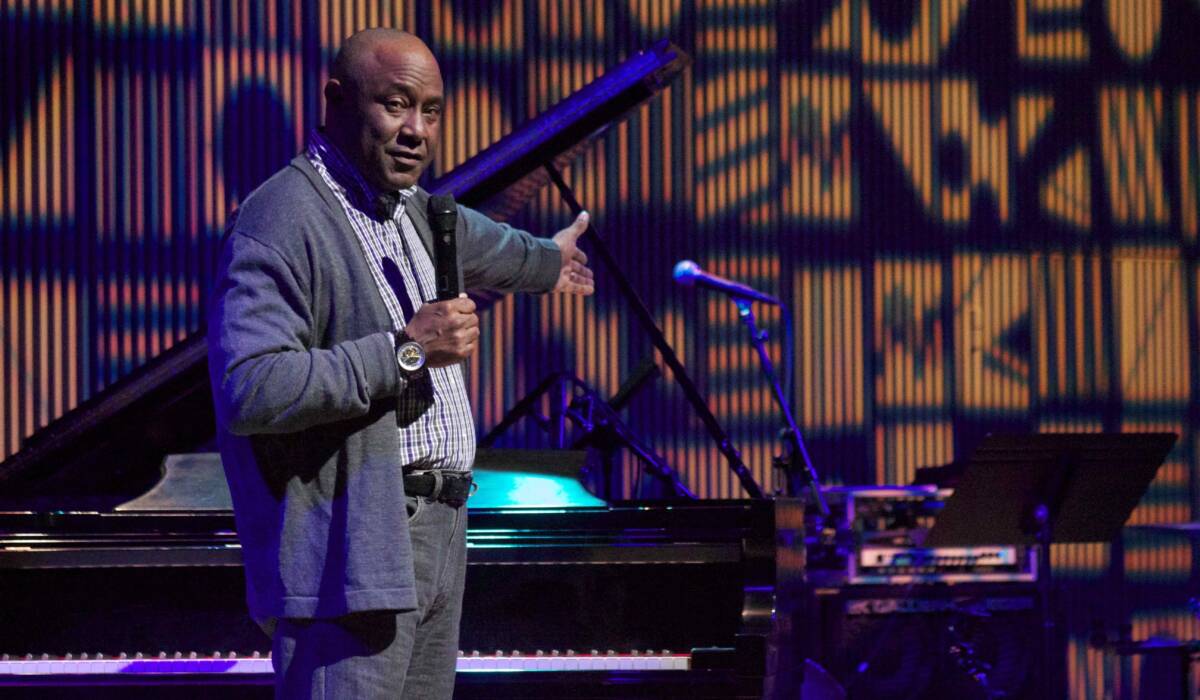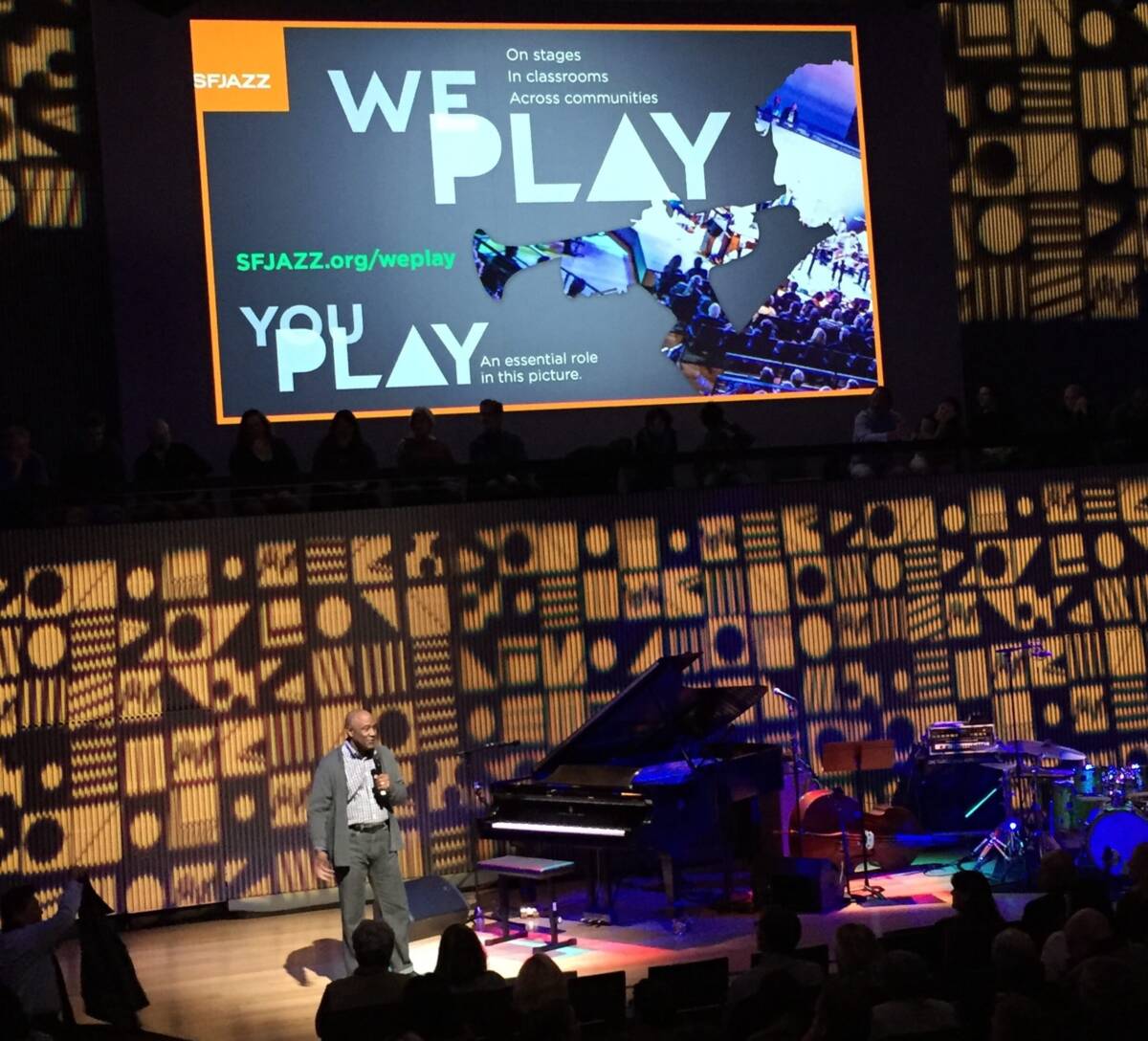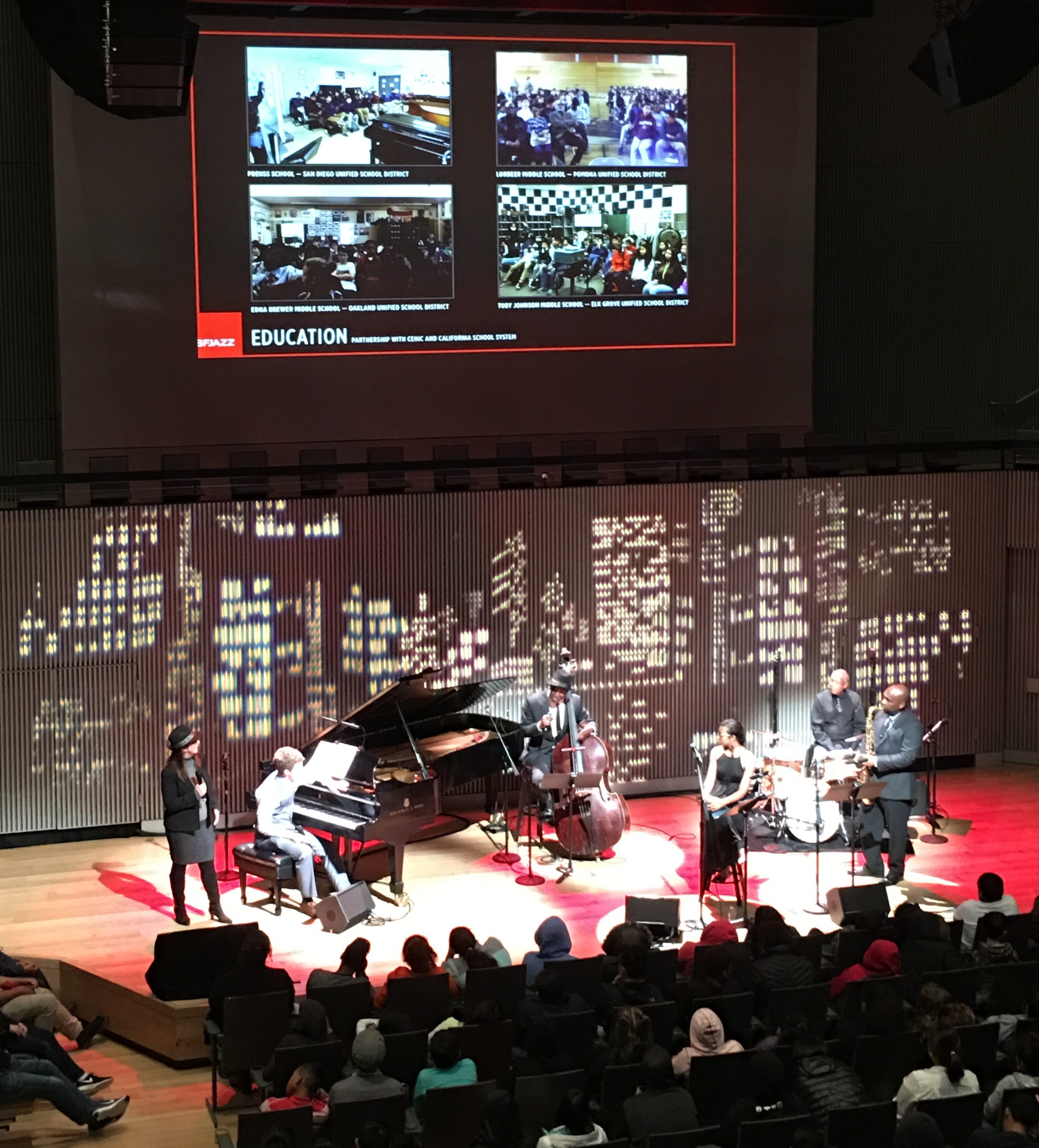
When Mount Allen was a child growing up in Detroit, Michigan, his teachers would occasionally pack him and his classmates into a big yellow bus and take them to the symphony to witness a live performance.
It’s an experience Allen never forgot–and one he believes everyone should be afforded. He’s working to give the public such opportunities through his role at San Francisco Jazz (SFJAZZ), which uses CENIC infrastructure to livestream performances to classrooms and libraries across the state.
“Doing this would not be possible were it not for CENIC,” said Allen, SFJAZZ’s longtime Director of Operations who was recently appointed the organization’s Director of Network Engagement. He previously completed his doctorate focused on CENIC and research and education networks. Under his new role, Allen said he’ll work to grow the frequency of live streamed performances.
SFJAZZ first connected to CalREN in February 2014. Its highly innovative and inaugural use of high-speed broadband was initially meant to create a cyber-symposium focused on the work of pianist and jazz legend Mary Lou Williams (1910-1981). High-speed broadband allowed participants to use music collaboration software and video-conferencing to explore and celebrate the life of this great American artist. This national symposium featured improvised piano duets by pianists in studios hundreds of miles apart, a portion of a work-in-progress film on Williams, and panel discussions with university scholars.
During the ensuing years, countless other performances have been streamed over CalREN and Internet2. CENIC’s advanced-networking technology helps SFJAZZ achieve virtually imperceptible latency, which is crucial for interactive online music performance.
SFJAZZ bills itself as the world’s largest non-profit jazz presenter. Founded in 1983 as a two-day jazz festival, it now serves more than 250,000 people per year.
Allen joined SFJAZZ to help open its first center in 2013, and shortly after began pursuing opportunities to have it connected to Internet2. He was soon introduced to Louis Fox, CENIC’s president and CEO.
“I explained to Louis that jazz–unlike European classical music–is very improvisational music, and the ability to perform jazz in distributed locations is a real task for networks because of the consideration of latency,” Allen recalled. “And unlike classical music, you don't know the next note, so you can't assume where the music will take you, as you could if you were playing classical music. It's a true test for latency.”
Allen caught Fox’s ear, and before long SFJAZZ was connected to the CENIC network with 1 Gbps connection. Over time, SFJAZZ expanded its bandwidth to 10 Gbps, and it’s now looking to expand that further.

SFJAZZ has always tried to expand its outreach into communities that don’t always have the opportunity to experience world-class performances, Allen said. This includes marginalized communities, and those that might lack access to large markets where performances typically happen.
“SFJAZZ is one of the greatest presenters of jazz in the world, and so it's not likely that these particular performances are going to end up in smaller markets,” he said. “For some folks, the opportunity to see artists of this caliber are usually only recorded. We provide live entertainment, which quite frankly is the ultimate experience as it relates to jazz, because jazz feeds off an audience like no other musical art form.”
And since the majority of California schools and libraries are also connected to CENIC, SFJAZZ can engage with them, regardless of their location, and provide them with high-quality experience in the cultural arts.
“Of course jazz is our focus, but the opportunity is available to any arts organization that is on the network to do the same thing,” Allen said. “We’re trying to create models so that performing arts organizations can share what they do with the communities that they support.”

Right now, SFJAZZ is engaging with the Imperial County Office of Education, which recently took over as circuit aggregator for California’s libraries, to identify schools and libraries that have the opportunity to participate in its programs.
This includes exchanges where SFJAZZ hosts a performance in its venue and invites students throughout San Francisco to come enjoy it. At the same time, the performance is streamed to select schools. This program also takes place in public libraries with intergenerational audiences.
“We create one big audience of both in-person and remote presence, and we interact with the remote students just like we're interacting with the students in the theater itself,” Allen said. “We provide them opportunities to ask questions and to speak directly to the artists.”
Schools and libraries interested in bringing the program to their school can contact SFJAZZ by emailing cenic@sfjazz.org.
SFJAZZ is among several cultural institutions that are connected to CENIC, with others including but not restricted to the Exploratorium and California Academy of Sciences in San Francisco, The Getty in Los Angeles and the LA Philharmonic.